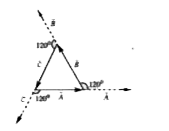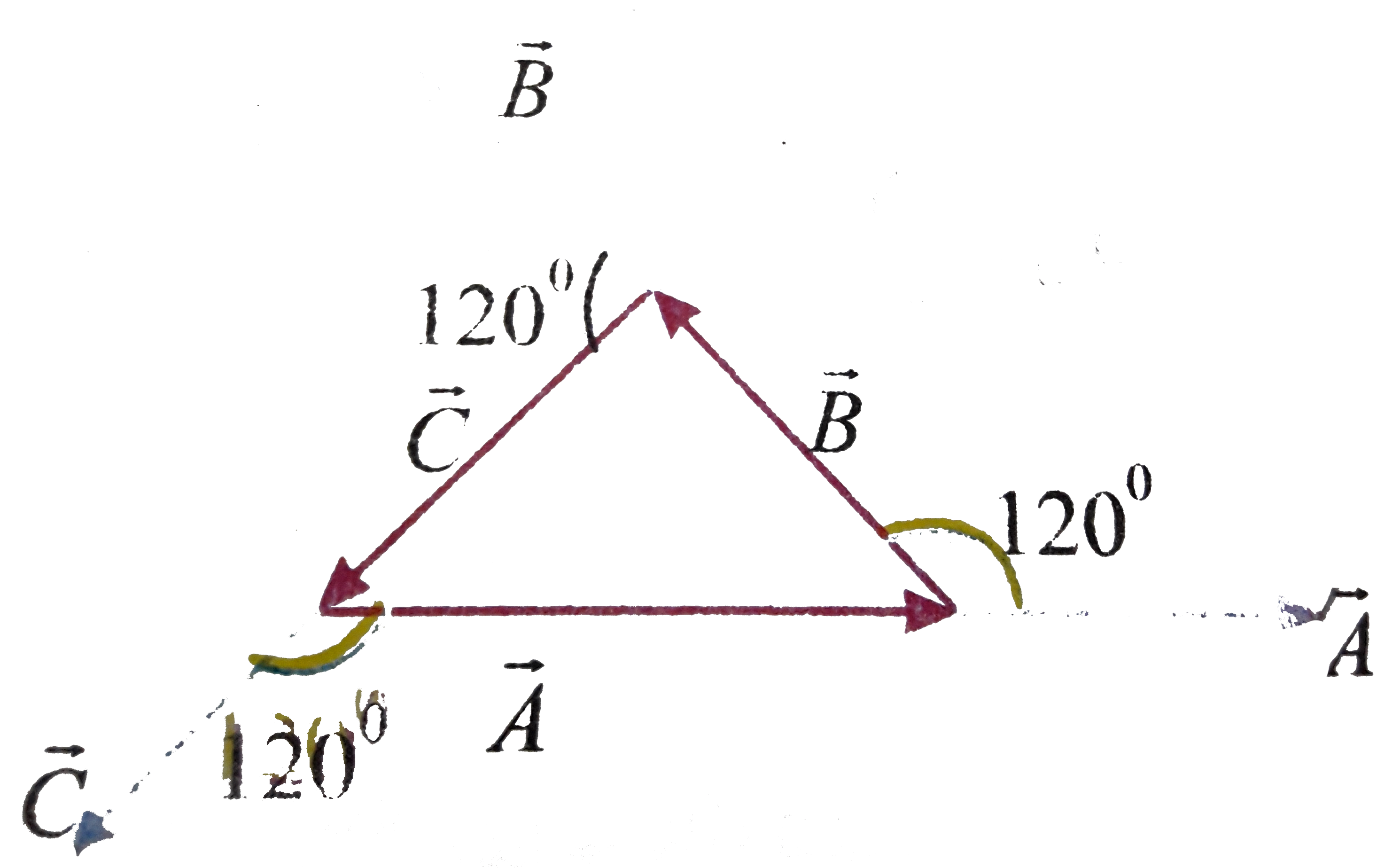If A,B,C represents the three sides of an equilateral triangle taken in the same order then find the angle between i) A and B ii) B and C iii) A and C.
 Solution in Telugu
Solution in Telugu
From the diagram the angle between the vectors →Aand→B is 120∘ the angle between →Band→C is 120∘ the angle between →Aand→C is 120∘
Topper's Solved these Questions
- MOTION IN A PLANEBOOK - AAKASH SERIESCHAPTER - MOTION IN A PLANEEXERCISE - EXERCISE-A (Vectors & Scalars)
25 Videos
- MOTION IN A PLANEBOOK - AAKASH SERIESCHAPTER - MOTION IN A PLANEEXERCISE - EXERCISE-A (Addition & Subtractions of Vectors)
10 Videos
- MAGNETISMBOOK - AAKASH SERIESCHAPTER - MAGNETISMEXERCISE - PROBLEMS (LEVEL-II)
13 Videos
- MOTION IN A PLANEBOOK - AAKASH SERIESCHAPTER - MOTION IN A PLANEEXERCISE - QUESTION FOR DESCRIPTIVE ANSWER
7 Videos
Similar Questions
In Latin, the word vector means
View SolutionThe resultant of two forces cannot exceed
View SolutionThe force between the two poles is reduced to 'x' newtons when their separation is increased n times. It is increased by 'y' newtons when their separation is made 1/nth of their original value. What is the relation between x and y?
View SolutionA particle is projected over a triangle from one end of a horizontal base and garzing the vertex falls on the other end of the base . If α and β the base angles and θ the angle of projection then show that tanθ=tanα+tanβ.
View SolutionIf a,b,c be the vectors represented by the sides of a triangle taken in order,then a+b+c=0
View SolutionIf →a, →b, →c represent the sides of a triangle taken in order, then write the value of →a+→b+→c
View SolutionIf →A,→B,→C represents the three sides of an equilateral triangle taken in the same order then find the angle between
(i) →A and →B (ii) →B and →C (iii) →A and →C.

View SolutionIf the roots of the equation c^(2)x^(2)- c(a+b)x + ab =0 are sin A, sin B where A, B and C are the angles and a, b, c are the opposite sides of a triangle, then the triangle is : (i) right angled (ii) acute angled (iii) obtuse angled (iv) sin A + cos A = (a+b)/(c )
View SolutionIf veca, vecb and vecc are represented by three sides of equilateral triangle taken in same order. P.T. veca+vecb+vec c=vec0 .
View SolutionIf a,b,c are sides of an equilateral triangle, the value of ∣∣ ∣∣abcbcacab∣∣ ∣∣ is
View SolutionIf A={1,2,3} B={3,5,6} C={3,4,7}. Find (i) A−(B∪C) (ii) B△C (iii) A△B
View SolutionIf A,B,C represents the three sides of an equilateral triangle taken in the same order then find the angle between i) A and B ii) B and C iii) A and C.
View SolutionFill in the blanks in the following so that each of the following statements is true.
(i) Sides opposite to equal angles of a triangle are .......
(ii) Angle opposite to equal sides of a triangle are .......
(iii) In an equilateral triangle all angles are .......
(iv) In a ABC if ∠A=∠C, then AB= .....
(v) If altitudes CE and BF of a triangle ABC are equal, then AB= ........
(vi) In an isosceles triangle ABC with AB=AC, if BD and CE are its altitudes, then BD is .......... CE.
(vii) In right triangles ABC and DEF, if hypotenuse AB=EF and side AC=DE, then ABC ≅ ....
View SolutionIf vec(A), vec(B), vec(C) represents the three sides of an equilateral triangle taken in the same order then find the angle between (i) vec(A) and vec(B) (ii) vec(B) and vec(C) (iii) vec(A) and vec(C) .
View Solutionयदि A,B.Cत्रिभुज के कोण है, तो निम्न में से कौनसा समबाहु त्रिभुज को नहीं दर्शाता है -
View Solution